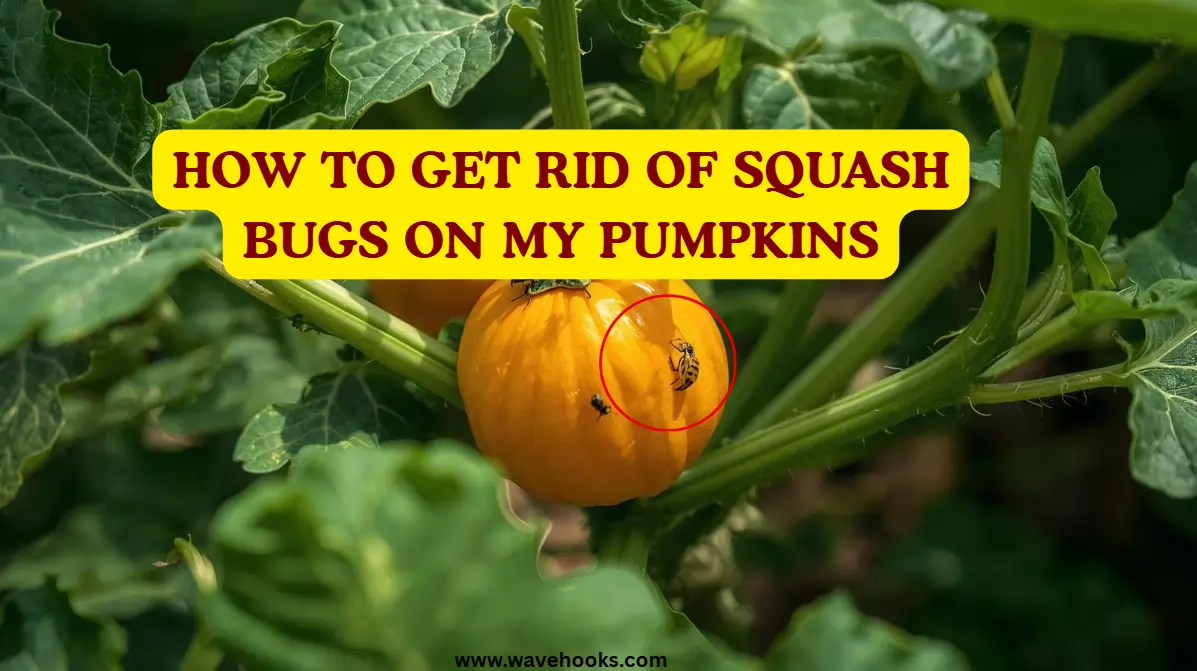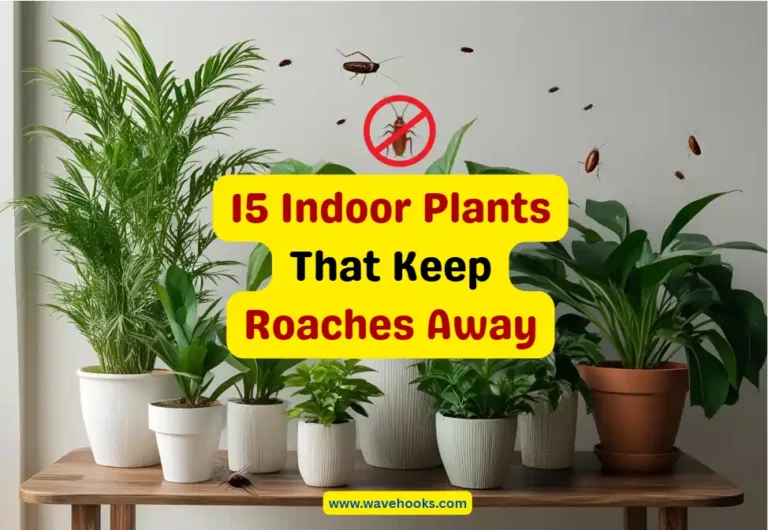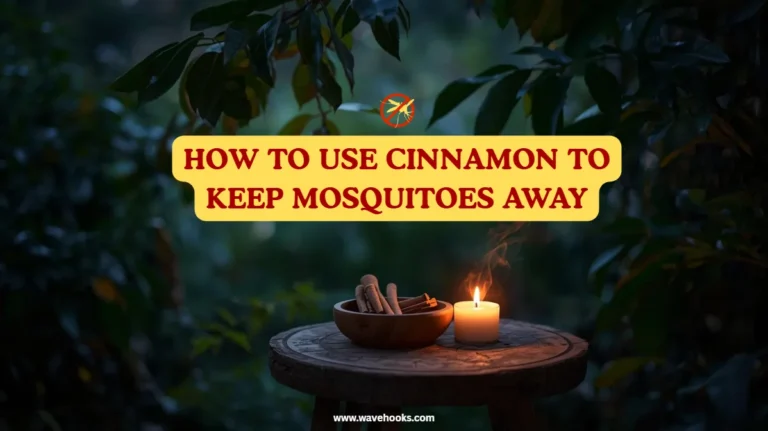Have you ever walked out to your pumpkin garden early in the morning, coffee in hand, only to see your green leaves turning yellow?
It’s like watching your hard work fade away overnight. What are those sneaky little culprits? Squash bugs!
They hide under leaves, multiply fast, and drain the life out of your pumpkins before you even notice.
But the main question is how to get rid of squash bugs on my pumpkins?
Let’s walk through everything you need to know, from identifying early signs to natural, powerful remedies that’ll save your pumpkins.
How to get rid of squash bugs on my pumpkins by Identifying Signs and Symptoms
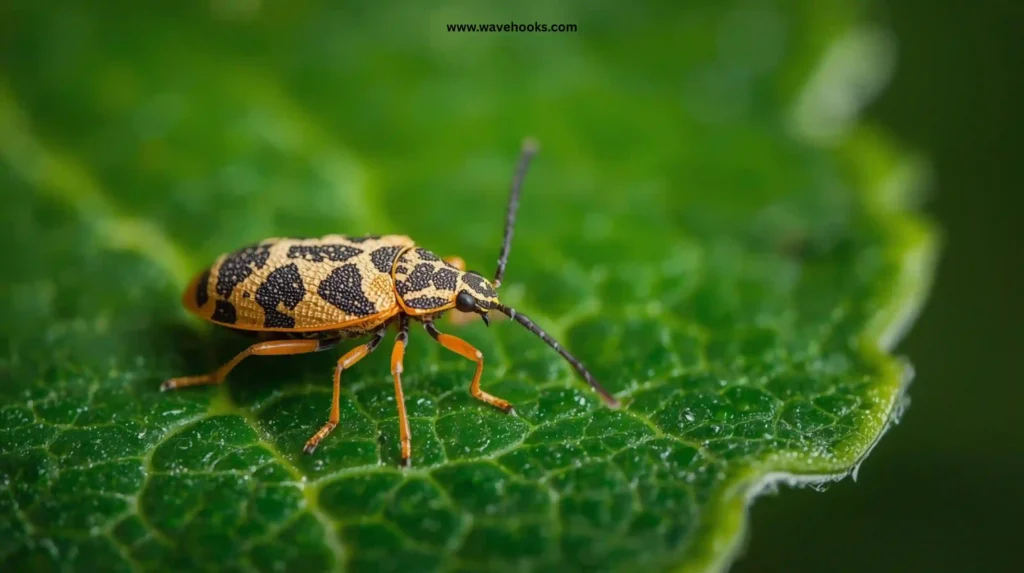
When it comes to squash bugs, early detection is everything. The sooner you notice their presence, the easier it is to control them.
Squash bugs are flat, shield-shaped insects about half an inch long, gray or brown in color easily blend with soil and stems.
Their eggs are small, shiny, and bronze-colored, usually found in neat clusters on the undersides of leaves.
They’re quick crawlers, usually hiding under leaves or between vines. The most telling signs?
- Leaves start yellowing even though they are provided with enough water.
- You can notice crispy edges forming on pumpkin leaves.
- Small, brown spots are spreading through vines.
- And the worst, suddenly the plants collapse even when the soil is moist.
If you see these symptoms, don’t panic. You’ve just caught the problem early, and that gives you a serious advantage.
Suggested Read: How To Get Rid Of Very Tiny Bugs In Bathroom: 25 Sneaky Tips!
Life Cycle of Squash Bugs: Understanding Their Behavior
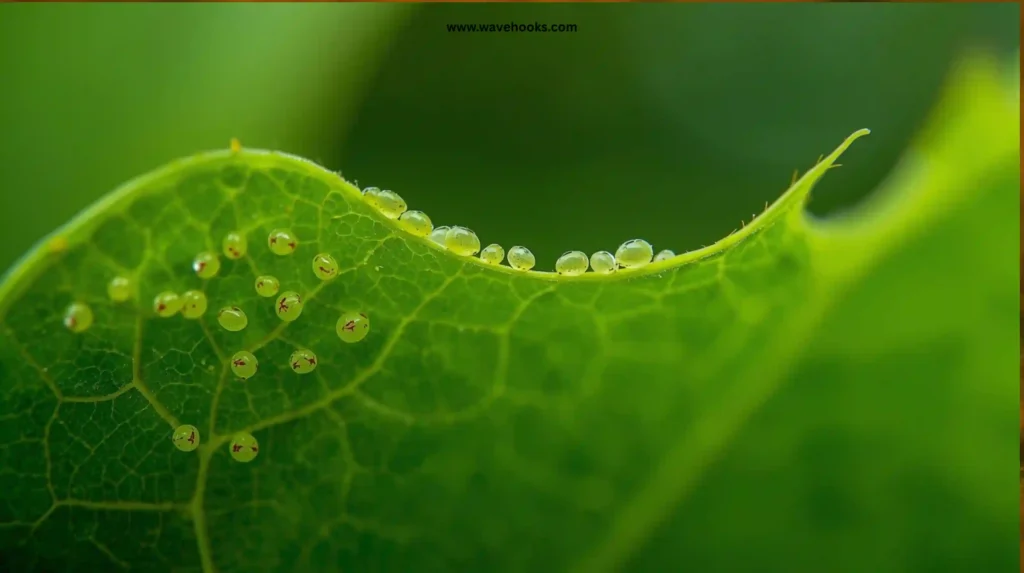
Knowing your enemy’s habits gives you power. Squash bugs are most active during late spring through early fall, exactly when your pumpkins need the most care.
They live in dead leaves, garden debris, and old vines. Once the weather warms, adults emerge, mate, and begin laying hundreds of eggs on pumpkin leaves.
In about 10 days, those eggs hatch into nymphs, small, grayish bugs that move fast and feed aggressively.
Within six weeks, they become adults, starting the entire cycle again. That’s why one missed round of eggs can turn into a full-blown invasion in just a month.
Your goal? Interrupt this cycle. Kill eggs early, control nymphs before they grow, and make your garden unwelcoming for adults.
That’s the real key to mastering how to get rid of squash bugs on my pumpkins, not just treating the problem, but preventing the next generation before it hatches.
Suggested Read: 7 Easy Clues Where Do Fruit Flies Lay Their Eggs In The House!
Natural Remedies to Repel Squash Bugs
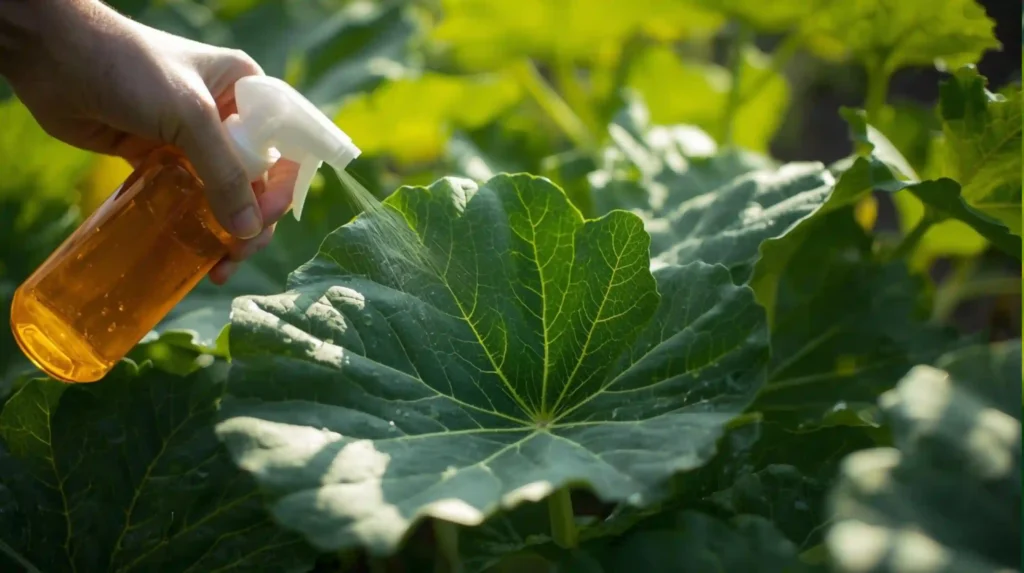
Nature always provides us with what we need. We just have to know where to look.
Instead of chemical sprays, which can harm pollinators, go for organic pest deterrents that are both safe and powerful.
Neem oil, garlic spray, and diatomaceous earth are my top three. Neem oil disrupts bug hormones, making reproduction impossible.
Garlic spray works like nature’s perfume as it smells good to you but awful to them.
And diatomaceous earth? It’s a microscopic warrior that dries out bugs on contact.
When used consistently, these natural remedies can reduce infestations in less than two weeks.
Suggested Read: If You Kill A Cockroach Will It Lay Eggs? 15 Worst Myths!
When and How to Handpick Squash Bugs
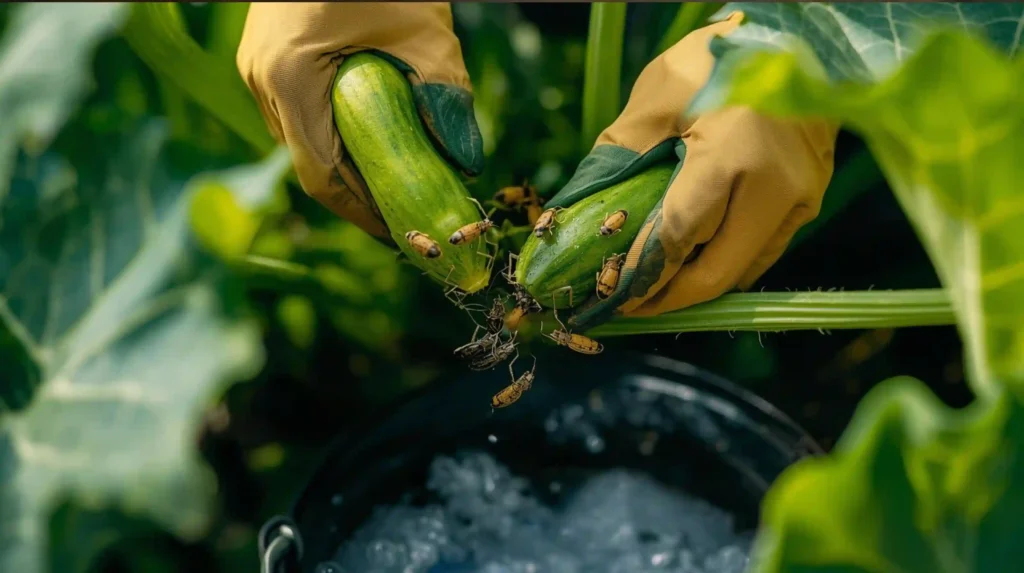
Sometimes, the best solutions are the simplest. Yes, it’s a little hands-on. But it’s effective.
If you can spare a few minutes each morning or evening, handpicking can make a huge difference.
Squash bugs are slow and lazy in cooler temperatures. That’s your weapon. Wear gloves, flip the leaves, and check below.
If you find eggs, gently scrape them off with a butter knife or piece of tape. Drop adults into a jar of soapy water.
Studies show that handpicking combined with neem spray can reduce visible squash bugs by up to 80% in just two weeks.
Suggested Read: 12 Crazy Tricks On How To Wash Bananas To Prevent Fruit Flies
Best ways to get rid of squash bugs on my pumpkins

Here are some best ways to choose how to get rid of squash bugs on my pumpkins:
1. Early Morning Sweep
Make it your daily ritual — coffee in one hand, gloves in the other. Early mornings are when squash bugs move slowly. Flip leaves, catch them, and drop each into soapy water. Just three days of this habit can transform your patch. It’s calm, satisfying, and the simplest organic pest control method.
2. Neem Oil Spray
Neem oil isn’t just a treatment; it acts as its prevention in a bottle. Mix one teaspoon of neem oil and mild soap in a liter of water. Spray weekly, coating both sides of the leaves. It stops squash bug growth cycles naturally and keeps your pumpkins glowing. Think of it as your plant’s invisible armor against future attacks.
3. Trap Boards by Night
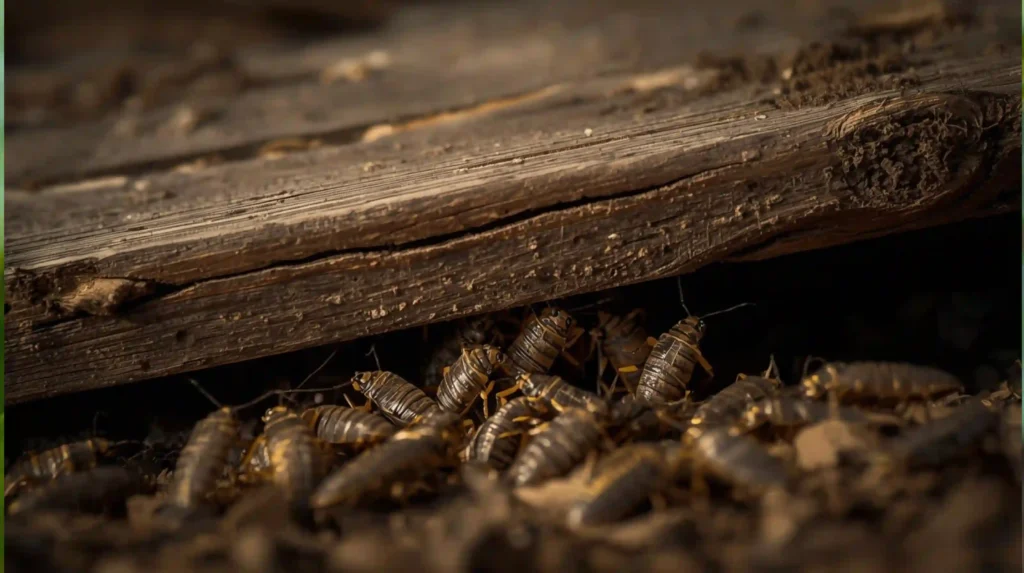
Before sunset, lay small wooden planks near pumpkin vines. Overnight, squash bugs crawl under them for warmth and shelter. In the morning, lift the boards and destroy the pests. It’s simple, non-toxic, and fun to involve kids in. With just patience and consistency, you’ll cut the population without a single drop of pesticide.
4. Garlic-Chili Spray Defense
Blend garlic, chili, and water, then strain into a spray bottle. Apply under pumpkin leaves, bugs hate the pungent smell and run instantly. This spicy defense also repels aphids and beetles. It’s your zero-cost, all-in-one organic weapon that turns everyday kitchen ingredients into a garden’s powerful protective shield.
5. Diatomaceous Earth Dust Barrier
Sprinkle food-grade diatomaceous earth lightly around vines and leaf bases. The fine powder pierces insect shells, dehydrating them naturally while staying safe for pets and plants. Reapply after rain or watering. Within days, you’ll see fewer bugs crawling under leaves. It’s one of nature’s most elegant, chemical-free pest eliminators.
6. Floating Row Covers

Young pumpkins need protection early. Use floating row covers that let in sunlight and moisture but block pests. Keep them on until flowers bloom, then remove for pollination. This simple barrier keeps adult squash bugs from landing. It’s like giving your pumpkins a breathable safety net during their most delicate growth stage.
7. Companion Plant Power
Grow herbs like mint, dill, or catnip beside your pumpkins. Their strong scents confuse squash bugs and attract ladybugs and lacewings, nature’s pest police. It’s beauty and defense combined, your patch smells divine, looks lush, and stays naturally protected. A little strategic planting brings powerful organic pest control rewards.
8. Crop Rotation Routine
Squash bugs remember their feeding grounds. Break their memory by rotating crops each season. Move pumpkins to a different bed yearly, away from last year’s soil. This disrupts overwintering bugs and strengthens soil health. A simple annual shift not only confuses pests but keeps your pumpkins vibrant and disease-free every season.
9. Smart Mulching
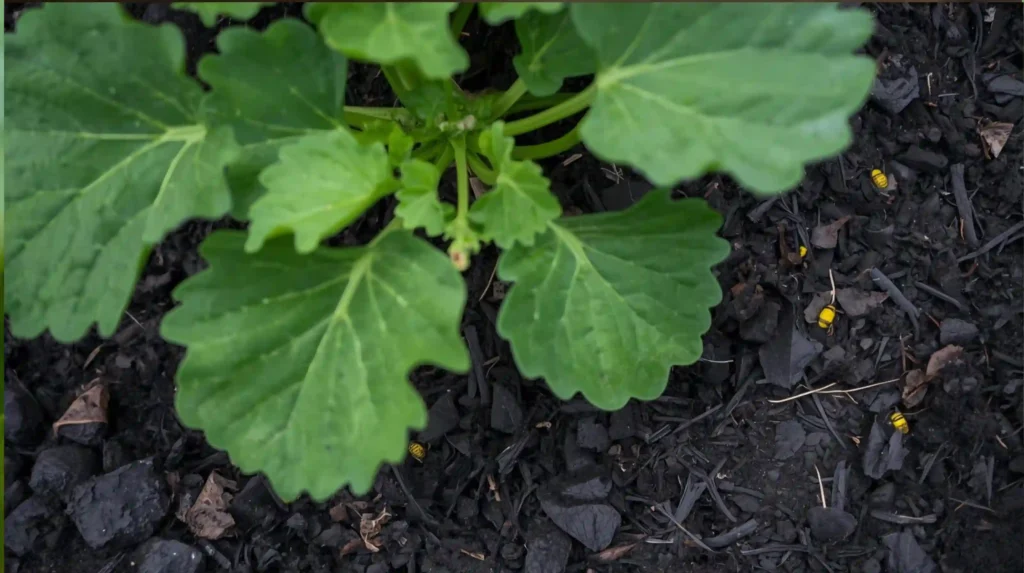
Choose light, breathable mulch like straw instead of dense bark. It keeps soil moist but prevents bugs from nesting. Avoid thick, damp layers that’s their hiding paradise. Smart mulching balances soil temperature, supports roots, and discourages pests. Think of it as home design for your pumpkins: light, safe, and clean.
10. The Winter Cleanup Rule
Once harvest ends, clear your pumpkin patch completely. Remove old vines, leaves, and debris. It’s where squash bugs hibernate. Compost only clean material, or safely burn the rest. A spotless bed ensures no eggs survive winter. This cleanup habit guarantees your next season starts fresh, healthy, and bug-free.
Suggested Read: 15 Shocking Reasons Why Do Roaches Keep Coming Back?
11. Invite Predators
Ladybugs, lacewings, and ground beetles are your pumpkin’s natural protectors. Attract them by planting dill, alyssum, or fennel nearby. These tiny warriors devour squash bug eggs before they hatch. Skip harsh sprays, let nature’s pest patrol handle the heavy lifting. It’s a symbiotic partnership that rewards you with balance and beauty.
12. Decoy Planting Strategy

Plant a small patch of zucchini or yellow squash near your pumpkins. Squash bugs prefer these decoys, sparing your main crop. Once you see them crowding the decoy plants, remove and dispose of those leaves. It’s smart, sacrificial gardening, giving up one patch to protect your prized pumpkins all season long.
13. Handheld Vacuum Hack
Who knew house gadgets could save your pumpkins? Use a handheld vacuum to suck squash bugs and eggs off leaves. Empty them into soapy water afterward. It’s quick, satisfying, and perfect for larger infestations. You’ll cover more ground in less time a modern, mess-free twist on organic pest control.
14. Baking Soda Shield
Mix one tablespoon of baking soda, a drop of dish soap, and a liter of water. Spray weekly on leaves. It dries bug eggs, repels adults, and prevents fungal diseases, three wins in one mix. This humble kitchen remedy strengthens your vines naturally, creating a healthy, pest-resistant pumpkin patch with ease.
Suggested Read: 45 Crazy Ways How To Get Rid Of Wood Boring Bees Overnight
15. Consistency Wins Battles
No single trick beats persistence. Combine daily checks, weekly sprays, and post-harvest cleanups into one steady rhythm. Over time, bugs disappear, vines flourish, and your pumpkins grow bold and bright. Gardening success is consistent care. Small actions, repeated frequently, build the most beautiful and resilient patches.
Preventative Measures: Preparing Your Pumpkin Patch

Think of prevention as your first and strongest defense. Before planting season begins, do a deep clean of your garden.
Old vines, dry leaves, or even small piles of mulch are comfortable winter shelters for squash bugs.
Here’s what works best:
- Rotate your crops yearly. Never plant pumpkins in the same area for two years in a row.
- Introduce companion plants like mint, catnip, and marigold. Their scents naturally repel pests.
- Keep soil loose and dry, as squash bugs dislike dry, airy environments.
- Mulch wisely. Thick wood mulch can harbor pests. Instead, use straw or shredded newspaper.
A clean, well-structured garden keeps squash bugs unattractive and frustrated.
Suggested Read: What To Pour Down The Drain To Kill Roaches: 15 Best Hacks!
Common Mistakes to Avoid When Managing Squash Bugs

Even seasoned gardeners sometimes get tripped up by these clever pests.
Here are the most common missteps I see:
- Only killing adults. Leaving eggs behind means you’ll have a new generation in 10 days.
- Skipping winter cleanup. Old vines serve as perfect pest hotels.
- Using too many chemical pesticides kills pollinators and weakens soil.
- Ignoring timing by missing the early stages gives bugs time to reproduce.
Success lies in consistency, not aggression. A gentle, smart routine always beats one-time panic spraying.
Suggested Read: How To Get Rid Of German Cockroaches: 12 Powerful Methods!
Real-World Proven Results
According to the University of Minnesota Extension, consistent manual removal and organic sprays can reduce squash bug infestations by up to 75% in one season.
Gardeners practicing crop rotation report 30% higher yields and healthier vines.
Even home gardeners who followed just 3–5 of these tricks reported visible improvements within two weeks. That’s the real power of consistency.
Suggested Read: 15 Essential Oils To Repel Flies And Avoid Toxic Sprays!
Final Thoughts

Your pumpkin patch is more than soil and leaves. It’s your time, care, and patience taking shape. Don’t let squash bugs steal that from you.
With these methods, you can regain control naturally, no chemicals, no guilt. Just smart, steady gardening.
Remember: squash bugs thrive on neglect. The moment you start observing daily, you’ve already won half the battle.
The other half? Following these 15 tricks and sticking with them. Stay patient, stay gentle, and stay curious.
Suggested Read: How To Get Rid Of Rabbits Without Killing Them Quickly!
FAQs: how to get rid of squash bugs on my pumpkins

1. What kills squash bugs instantly?
A mix of soapy water and neem oil can kill squash bugs on contact. It coats their shells, suffocating them naturally.
2. How often should I spray my pumpkin plants?
Spray weekly and after every rainfall to maintain protection. Consistency prevents eggs from hatching.
3. Are squash bugs harmful to humans?
No, they don’t bite or spread disease. But they can destroy entire pumpkin crops fast, so act early.
4. Can vinegar help control squash bugs?
Yes, mix one part vinegar with three parts water and spray directly on leaves. It dries out eggs naturally, but avoid overuse.
5. What do squash bugs hate most?
Strong scents like garlic, mint, and chili. Use these in sprays or companion plants to keep them away.
6. Can squash bugs survive winter?
Yes, adults hide in garden debris. That’s why winter cleanup is crucial to break their cycle.
7. What’s the best natural pest control for pumpkins?
Neem oil, diatomaceous earth, and companion planting are the golden trio for safe, organic pest management.
Suggested Read: 14 Natural Ways To Get Rid Of Carpenter Bees At Home
Call Of Action

This season, don’t let squash bugs win. Walk your garden daily, get to know your plants, and act early.
Your pumpkins deserve that level of care, and you deserve the joy of a thriving harvest.
Start today. Pick one trick, apply it consistently, and watch your pumpkin patch transform.
Suggested Read: Are Silverfish More Common In Summer? Here’s What I Found!

